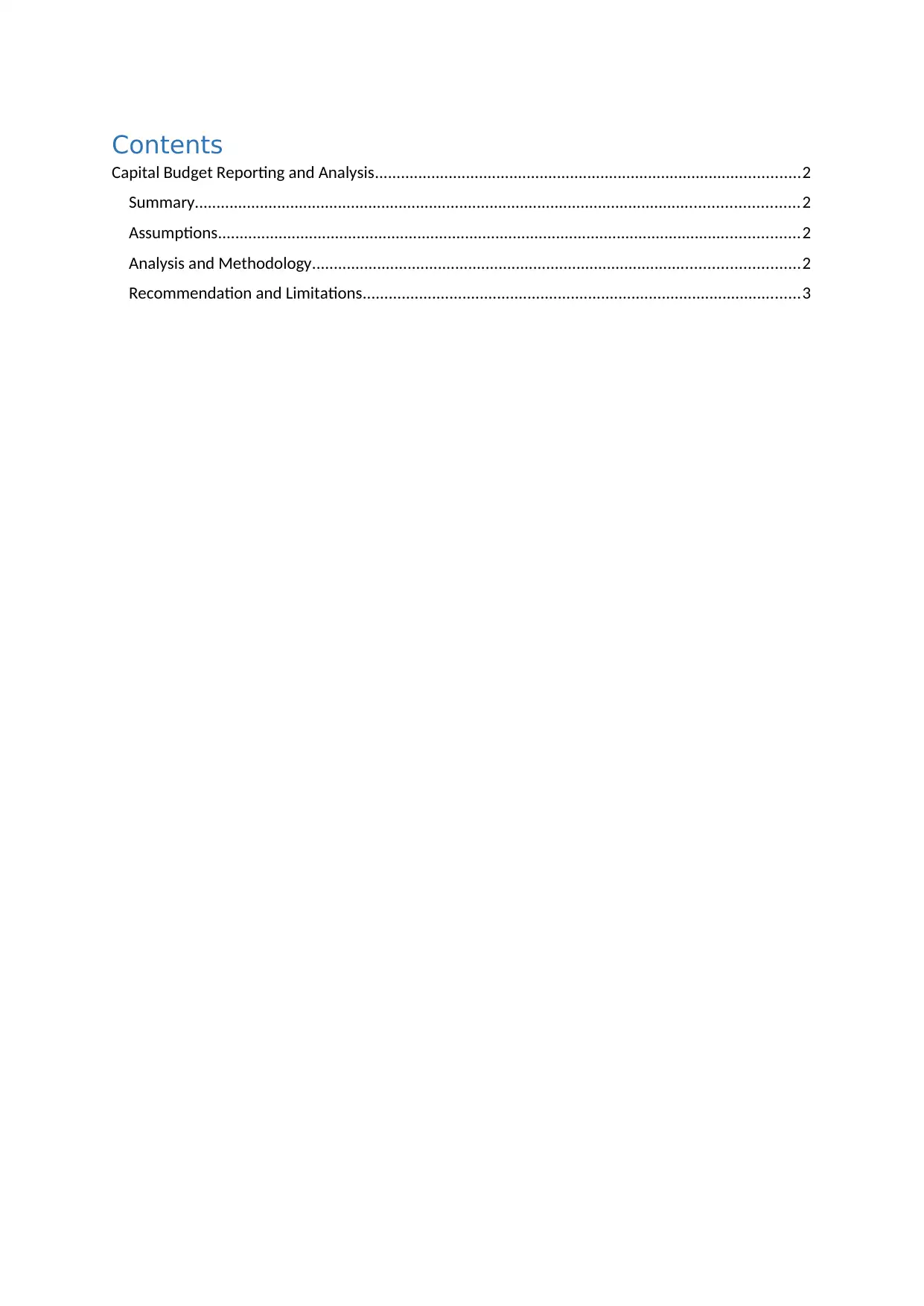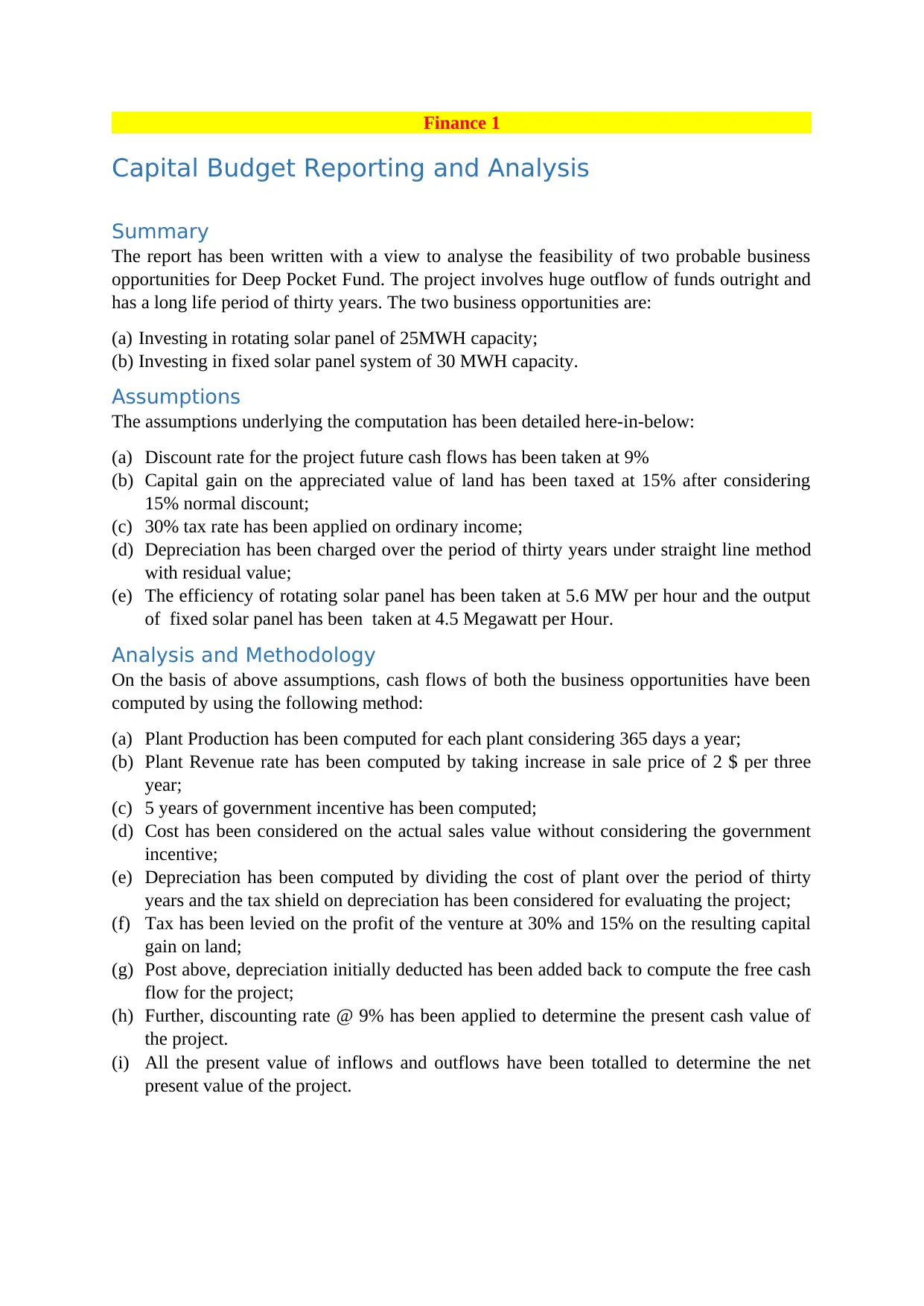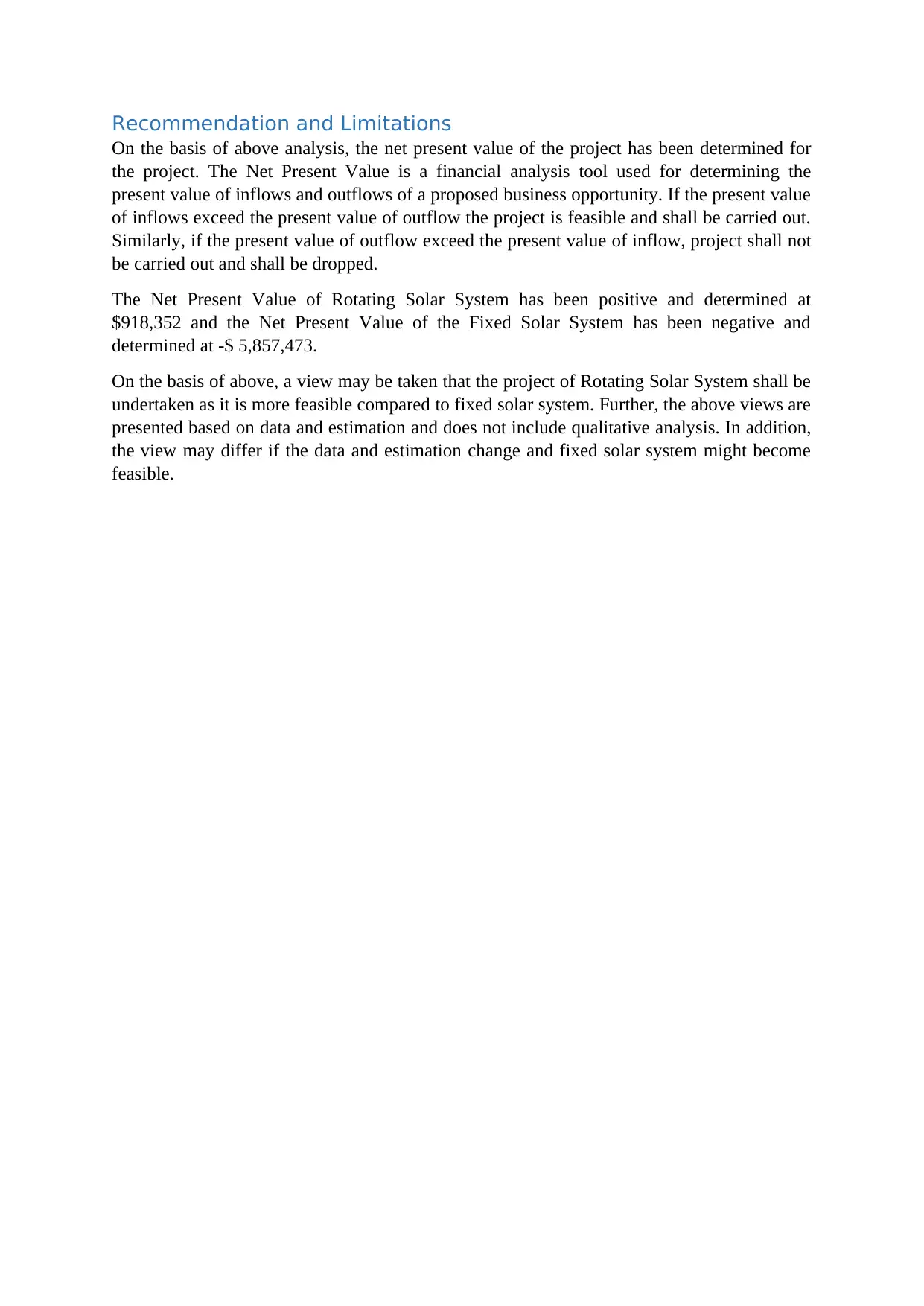EFB210 Finance 1, Semester 1: Capital Budgeting Report and Analysis
VerifiedAdded on 2023/03/17
|3
|654
|62
Report
AI Summary
This report provides a capital budgeting analysis for Deep Pocket Fund, evaluating two solar energy investment opportunities: a rotating solar panel system and a fixed solar panel system. The analysis, based on a 30-year project life, uses a 9% discount rate and considers factors like land appreciation, taxation, depreciation, and government incentives. The methodology includes calculating plant production, revenue, costs, depreciation, and free cash flow to determine the Net Present Value (NPV) of each project. The report recommends investing in the rotating solar system, which shows a positive NPV of $918,352, compared to the fixed solar system's negative NPV of -$5,857,473. The analysis highlights the importance of data and estimations, and notes the limitations of the analysis, which does not include qualitative factors.
1 out of 3










![[object Object]](/_next/static/media/star-bottom.7253800d.svg)